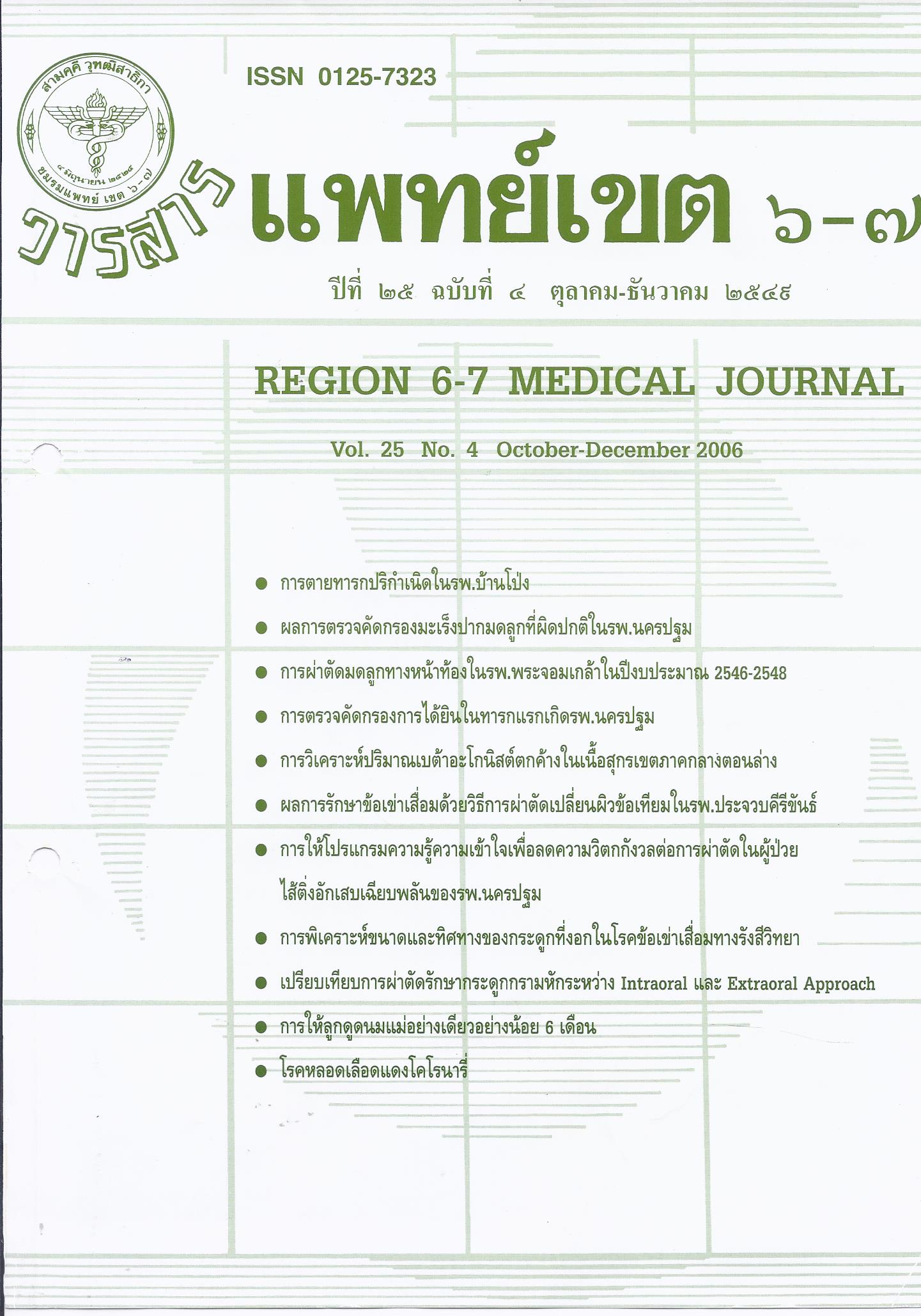การวิเคราะห์ปริมาณเบต้าอะโก้นิสต์ตกค้างในเนื้อสุกร เขตภาคกลางตอนล่าง
คำสำคัญ:
beta adrenergic agonist drugs, pork, EIAบทคัดย่อ
Beta-agonist drugs was administered for the treatment of Asthma in human. ln recent years, they were widely abused in meat producing animals especially for pigs leavin a problem of drug residues in meat and other tissue. The symptoms with overdosage consumption of beta—agonists are seizures angina, hypertension/hypotension, tachycardia, arrhythmias, nervousness, palpitation and malaise. ln order to control this drug in edible tissue, technique of competitive enzyme immunoassay was developed for determining drug residues in meat. Pork samples were hydrolyzed with pronase E and analyzed by beta—agonist EIA test kit. In 2005. beta-agonists were found in 107 from 750 pork samples (14.3%), compared with 72% in 2002, which distributed in Kanchanaburi, Nakhon Pathom, Prachuap Khiri Khan, Petchaburi, Ratchaburi, Samut Songkhram and Samut Sakhon provinces. The accuracy, precision, limit of detection (LOD), limit of quantitation (LOQ) and linearity (r2) of this method are 86.7%, 9.9%, 0.5 ppb, 1.0 ppb and 0.8844—O.9983 in the range of 0.125-2.000 ppb respectively. The results showed that educating and controlling good agricultural practice (GAP) system in the use of veterinary drug was achieved. However, continuous monitoring and law enforcement are still need to make sure that pork is safe for consuming.
ดาวน์โหลด
เผยแพร่แล้ว
รูปแบบการอ้างอิง
ฉบับ
ประเภทบทความ
สัญญาอนุญาต
ลิขสิทธิ์บทความเป็นของผู้เขียนบทความ แต่หากผลงานของท่านได้รับการพิจารณาตีพิมพ์ลงวารสารแพทย์เขต 4-5 จะคงไว้ซึ่งสิทธิ์ในการตีพิมพ์ครั้งแรกด้วยเหตุที่บทความจะปรากฎในวารสารที่เข้าถึงได้ จึงอนุญาตให้นำบทความในวารสารไปใช้ประโยชน์ได้ในเชิงวิชาการโดยจำเป็นต้องมีการอ้างอิงถึงชื่อวารสารอย่างถูกต้อง แต่ไม่อนุญาตให้นำไปใช้ในเชิงพาณิชย์




